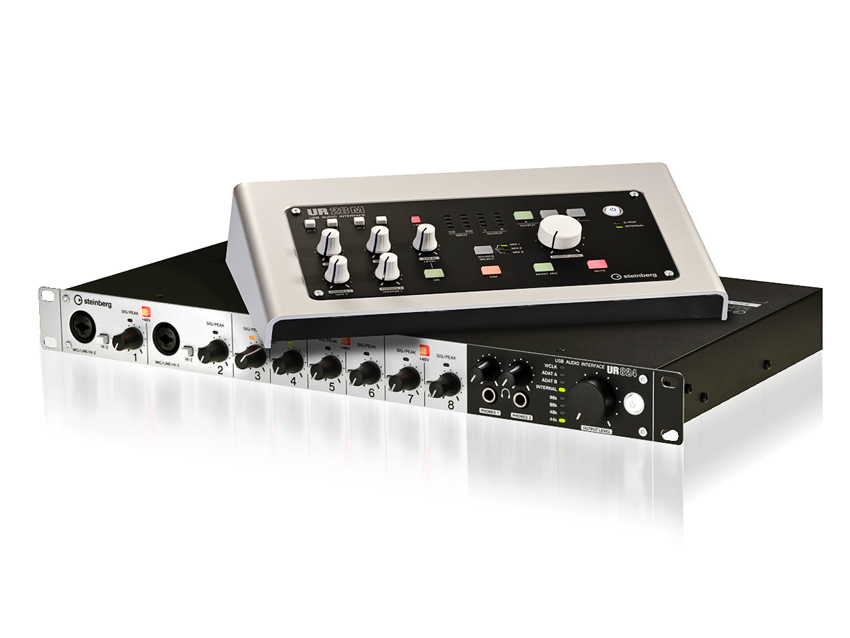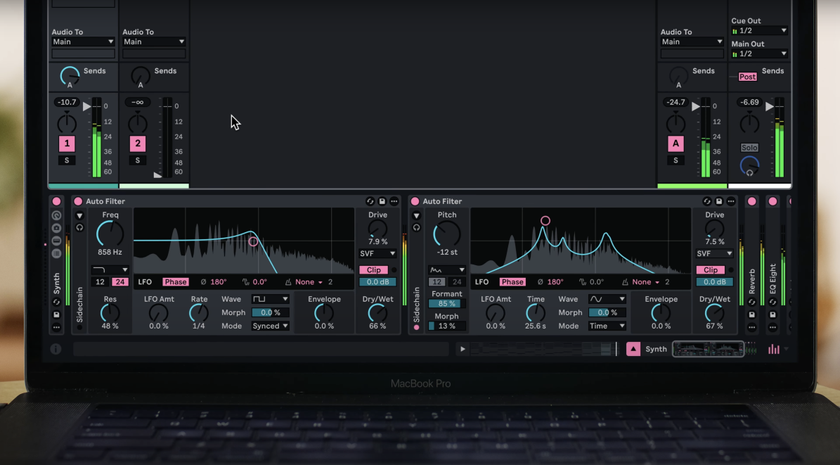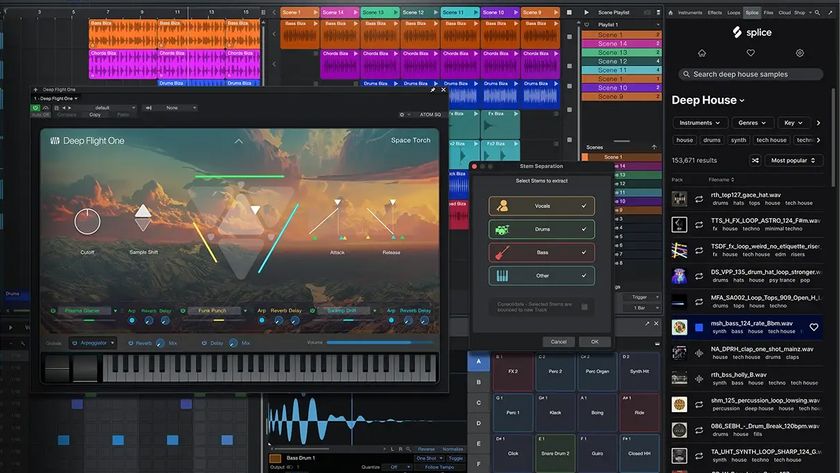New Steinberg audio interfaces announced

Steinberg has revealed that it will be releasing two new audio interfaces in November. The UR824 is designed to sit in a rack, while the UR28M has an angled chassis that makes it ideal for perching on a desk.
As well as a range of connectivity options (including D-Pre mic preamps), each interface sports its own DSP-powered reverb and channel strip effects. Latency-free monitoring is also promised.
UK prices have been set at £719 for the UR824 and £380 for the UR28M. The official Steinberg press release is below.
Steinberg UR824 and UR28M press release
Steinberg Media Technologies GmbH today revealed the beginning of its new range of audio interfaces with USB 2.0 connectivity: the rackmountable UR824 interface and the desktop UR28M interface. While the UR28M is shipping as of today, the UR824 will first be available in November of this year.
With the UR interfaces, Steinberg offers two professional solutions for musicians and producers. Both interfaces provide sufficient means of connectivity, D-Pre microphone preamps plus DSP-powered reverb and channel strip effects for monitoring at zero latency.
"The UR pair boasts excellent sound characteristics and provides monitoring mixes at no latency whatsoever. Consider the UR824 a comprehensive I/O solution and the UR28M an interface and dedicated monitor controller in one desktop console," commented Stefan Schreiber, hardware product marketing manager at Steinberg.
"UR824 and UR28M are the ideal choice for ambitious musicians and producers of project studios and larger recording facilities," Schreiber added.
Get the MusicRadar Newsletter
Want all the hottest music and gear news, reviews, deals, features and more, direct to your inbox? Sign up here.
The UR824 features eight Neutrik combo inputs, eight TRS outputs and two pairs of ADAT I/O doubling as S/PDIF that add up to 24 channels, plus Word clock I/O with JetPLL ultra-low jitter support. The UR28M offers two Neutrik combo inputs, two TRS inputs, six TRS outputs and S/PDIF I/O. The two-track input is an additional option for monitoring reference sources.
The UR824 features eight widely acclaimed D-Pre microphone preamps while the UR28M comes with two D-Pres. Each Class-A discrete microphone preamp utilizes an advanced Inverted Darlington circuit design and boasts a -26 dB Pad selector as well as 48 volt phantom power.
Another highlight is the dspMixFx technology powered by Yamaha's custom-designed SSP2 DSP chip. This offers latency-free monitoring together with the REV-X reverb and the Sweet Spot Morphing Channel Strip to users of any DAW software. The included dspMixFx DSP mixer handles all aspects of routing and monitor mixing in one easy-to-navigate interface.
The REV-X featured in the UR824 and UR28M is a complex reverb algorithm developed by Yamaha. Renowned for its sound quality, the REV-X features three types of reverb effects: Hall, Room and Plate simulations with reverb time and level control.
The Sweet Spot Morphing Channel Strip consists of a sidechain-enabled compressor and a three-band parametric equalizer, which can be applied to up to eight mono input channels or four stereo input channels on the UR824 and four mono input channels or two stereo input channels on the UR28M.
By including Cubase AI 6, a dedicated version of Steinberg's Cubase advanced music production system, both UR interfaces provide a full system solution for recording music in studio quality. Supporting up to 48 MIDI tracks, 16 instrument tracks, 32 audio tracks and 16 physical inputs at 96 kHz and 24-bit resolution, Cubase AI 6 comes with the HALion Sonic SE VST instrument as well as 26 quality audio effect processors. Other features are score editing, real-time pitch shifting and time stretching plus ReWire support.
Availability and pricing
The UR28M is available shortly through the Steinberg Online Shop. Shipping of the UR28M to dealers worldwide begins today, however, the exact time of availability at certified Steinberg dealers is subject to regional variations.
The UR824 will be available in November of this year.
The suggested retail price for the UR28M interface is EUR 449 including German VAT. In the United Kingdom, the suggested retail price for the UR28M is GBP 380 including VAT.
The suggested retail price for the UR824 interface is EUR 849 including German VAT. In the United Kingdom, the suggested retail price for the UR824 is GBP 719 including VAT.
UR28M features at a glance
- • 24-bit/96 kHz USB 2.0 audio interface
• Analog 4 in and 6 out plus stereo input for reference source
• S/PDIF coaxial I/O
• D-Pre Class-A discrete mic preamps supporting +48V
• Latency-free DSP-powered monitoring with one REV-X reverb and four Sweet Spot Morphing Channel Strips with any DAW by using the latest dspMixFx technology
• Native VST 3 plug-ins of REV-X and Sweet Spot Morphing Channel Strip included
• Digitally controlled monitor level control with DIM, Mono, and Mute fed by a 3x3 monitoring matrix
• 2 separate headphone buses with individual outputs
• Cubase AI 6 music production software included
• Cross-platform compatibility for Mac OS X and Windows
UR824 features at a glance
- • 24-bit/96 kHz USB 2.0 audio interface
• Analog 8 in and 8 out with 8 D-Pre Class-A discrete mic preamps supporting +48 V
• 2 pairs of ADAT optical I/O (doubles as S/PDIF) provide 16 in and 16 out (S/MUX compatible, 8 in and 8 out @ 96 kHz)
• Latency-free DSP-powered monitoring with one REV-X reverb and eight Sweet Spot Morphing Channel Strips with any DAW by using the latest dspMixFx technology
• Native VST 3 plug-ins of REV-X and Sweet Spot Morphing Channel Strip included
• 2 separate headphone buses with individual outputs
• Word clock I/O with 2 BNC connectors plus JetPLL ultra-low jitter support
• Cubase AI 6 music production software included
• Cross-platform compatibility for Mac OS X and Windows

I’m the Deputy Editor of MusicRadar, having worked on the site since its launch in 2007. I previously spent eight years working on our sister magazine, Computer Music. I’ve been playing the piano, gigging in bands and failing to finish tracks at home for more than 30 years, 24 of which I’ve also spent writing about music and the ever-changing technology used to make it.











